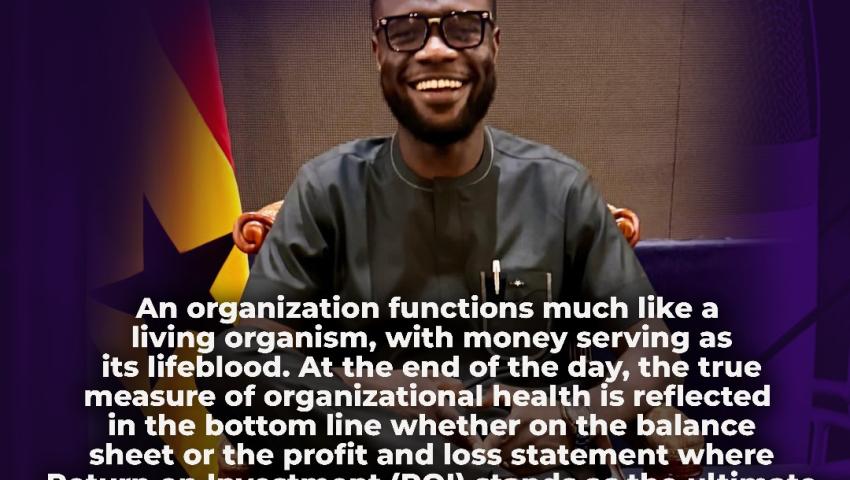
Mastering Project Delivery: Jacob Ennin on Risk, Stakeholders, and the Power of the WBS
In a compelling episode of Frank’s Project Pulse, seasoned project management professional Jacob Ennin offers deep insights into the practical dimensions of managing successful projects.
In a compelling episode of Frank’s Project Pulse, seasoned project management professional Jacob Ennin offers deep insights into the practical dimensions of managing successful projects. In a conversation with the host, Frank Owusu-Asamoah, the discussion centers on risk management, stakeholder engagement, budget realism, and the use of structured tools like the Work Breakdown Structure (WBS). For project managers navigating today’s complex delivery environments, the episode serves as a masterclass in precision, foresight, and leadership.
Risk Management: Identify Early, Classify Intelligently
Jacob opens the discussion by emphasizing the importance of identifying risks before a project begins. He advocates for the creation of a risk register—a living document that categorizes risks into controllable and uncontrollable elements. By involving the project team in this early phase, managers can surface potential challenges that might otherwise be overlooked. Equally crucial is the classification of risks by impact level—high, medium, or low—to ensure proper prioritization and resource allocation.
Stakeholder Engagement: Influence Without Authority
Risk management doesn’t exist in isolation—it must be communicated. Jacob points out that when sharing risk-related concerns with stakeholders, tone and collaboration matter. Project managers should avoid presenting risks in a way that feels directive or inflexible. Instead, by engaging teams and stakeholders collaboratively, they can foster a shared sense of ownership and avoid costly deadlocks.
Budgeting for the Unpredictable
A standout moment in the conversation is Jacob’s reminder that project budgets must anticipate risk. Too often, budgets are built around best-case scenarios, leaving little room for unexpected costs. For uncontrollable risks, he recommends open, transparent communication with stakeholders about the need for contingency allocations or budget adjustments. It’s a proactive, rather than reactive, approach to financial planning.
Work Breakdown Structure (WBS): A Critical Tool for Scoping and Risk Identification
Jacob strongly advocates for the Work Breakdown Structure (WBS) as a foundational tool for effective scoping. By breaking down the project into detailed, manageable components, project managers gain visibility over each task’s cost, timeline, and potential risks. The WBS, he argues, is not just a planning tool—it’s a risk detection system that helps reduce ambiguity and improve control.
Qualitative vs. Quantitative Risks: More Than Just Numbers
Risk isn’t only about numbers. Jacob encourages project leaders to differentiate between quantitative risks (measurable, financial, statistical) and qualitative risks (related to behavior, assumptions, or stakeholder behavior). He suggests project managers move beyond mere risk logs and invest time in developing substantive mitigation strategies—ones that address root causes, not just symptoms.
Rollback Planning: Safeguarding Tech Projects
For technology-focused projects, Jacob stresses the necessity of robust rollback plans and disaster recovery protocols. These serve as safety nets, ensuring that if a deployment fails, systems can be restored swiftly without major disruption. This forward-thinking approach is vital in today’s fast-paced, high-risk tech landscape.
From Projects to Enterprise: A Strategic Shift
As the conversation draws to a close, Jacob introduces the concept of Enterprise Project Management (EPM)—a strategic evolution from managing projects in isolation to managing them under a unified, organizational framework. This transition allows leaders to maximize resource use, align projects with business goals, and ensure cohesive governance across all initiatives.
Conclusion: A Blueprint for Project Success
This episode of Frank’s Project Pulse offers a comprehensive yet practical roadmap for project managers at every level. Jacob Ennin reminds us that effective project management is not just about delivering on time—it’s about anticipating risk, engaging stakeholders, budgeting realistically, and leveraging the right tools. Above all, it’s about seeing the bigger picture and leading with insight.
Insights from Frank’s Project Pulse -

My Webmaster
Leave a comment
Your email address will not be published. Required fields are marked *

